Journal of Gynecological Research and Obstetrics
Reproductive Risk of Couples with Reciprocal Translocations
Dhurata Kolgeci1, Jehona Kolgeci Istogu2*, Labinot Istogu3, Nazmi Kolgeci4, Christina Kouskouti5, Besar Krasniqi6 and Diturije Kolgeci Krasniqi7
1Master Candidate Physiotherapy, Medical Faculty, University of Prishtina, Kosovo
2Gynecolgist, Hallerwiese Clinic Nürnberg, Deutschland, PhD Candidate, Medical Faculty, University of Prishtina, Kosovo
3Anesthesiologist, Kosovo
4Thoracic Surgery, University Clinical Center of Kosova, Kosovo
5Gynecologist, Hallerwiese Clinic Nürnberg, Kosovo
6Nerologist, Kosovo
7Resident- Family Medicine, Kosovo
Cite this as
Kolgeci D, Istogu JK, Istogu L, Kolgeci N, Kouskouti C, Krasniqi B, et al. Reproductive Risk of Couples with Reciprocal Translocations. J Gynecol Res Obstet. 2024;10(2):023-030. Available from: 10.17352/jgro.000127Copyright License
© 2024 Kolgeci D, et al. This is an open-access article distributed under the terms of the Creative Commons Attribution License, which permits unrestricted use, distribution, and reproduction in any medium, provided the original author and source are credited.Background: In carriers of reciprocal translocations, gametes with unbalanced chromosomes can be created during the reproductive period, which reduces the reproductive ability of the carriers. The reproductive risk of carriers of reciprocal translocations depends on the length of the translocation segment. The aim of this study was to evaluate the reproductive risk of reciprocal translocations with segments of different lengths for couples carrying these translocations.
Methods: Chromosome analysis was performed using the Moorhead and Seabright method. For the exact identification of chromosomes, the standard method of G bands was used.
Results: A cytogenetic diagnosis of reciprocal translocations with segments of different lengths was confirmed on 20 couples. Among the examined cases the most frequent (55%) were those with reciprocal translocations having a long translocated segment on one chromosome and a short translocated segment on another non-homologous chromosome. In total 64 pregnancies were conceived among the examined couples with reciprocal translocation. These pregnancies showed a higher risk of miscarriages and congenital anomalies: 59.4% resulted in recurrent miscarriages, 14.1% in stillborn babies, 10.9% in babies with congenital malformations, and 15.6% in normal birth. All three groups of subjects with different types of reciprocal translocations had a high risk for recurrent miscarriages. The three couples with reciprocal translocations had primary infertility.
Conclusion: In our study population reciprocal translocations were identified as the main cause of impaired reproductive health in 17 couples and the primary cause of infertility in 3 couples. Among couples with reciprocal translocations involving long and short translocated segments, a higher risk of congenital anomalies and recurrent miscarriages was observed.
Introduction
Reciprocal translocations result from a break in a certain location of two non-homologous chromosomes and the subsequent reciprocal exchange of these detached chromosomal segments; in this case, the total amount of genetic material remains the same. The segments that get exchanged between these two non-homologous chromosomes are called translocated segments and they can be of different lengths. Since the carriers of reciprocal translocations have the same total amount of genetic material, they usually demonstrate a normal phenotype. Even though reciprocal translocations don’t cause obvious changes in phenotype, they still represent a considerate risk for the reproductive health of their carriers, because they can result in forming gametes with unbalanced chromosomes [1]. Among the general population, the frequency of reciprocal translocations is 1.44/1000 newborn babies [2]. In couples with recurrent spontaneous miscarriages, one of the partners could be a silent carrier of reciprocal translocations [3-8]. These translocations are present in 1.4- 3.5% of couples with recurrent spontaneous miscarriages [9-11].
Reciprocal translocations are one of the factors that decrease the reproductive ability of humans. In the literature, there are various cytogenetic studies in families with reciprocal translocations, trying to assess the risk for general reproduction of the patients affected by these translocations, respectively in assessing the risk of giving birth to a child with an anomaly as a result of unbalances karyotype [12-14]. These studies have shown that silent carriers of reciprocal translocations are at varying levels of risk for giving birth to babies with congenital anomalies and for recurrent spontaneous miscarriages. They also demonstrated that the reproductive risk depends on the length of the translocated segment, the chromosomes that are part of the translocation, and the translocation carrier’s gender.
The genetic mechanism of the harmful effect of reciprocal translocations on the reproductive ability of the carrier can be explained through the disjunction and segregation of the chromosomes during gametogenesis [1,15,16]. In heterozygote carriers of reciprocal translocations, the four chromosomes that are involved in multivalence approach their homologous segments during meiosis in the zygonema stage, creating a formation like a cross known as quadrivalent or pahiten diagram [17]. The disjunction and segregation of the chromosomes of the quadrivalent occurs during the anaphase of the first meiotic division; during this, the chromosomes travel towards the opposite poles of the cell division axis. Disjunction and segregation of chromosomes during meiosis can occur in four ways:
- Disjunction 2:2 and segregation adjacent -1.
- Disjunction 2:2 and segregation adjacent -2.
- Disjunction 2:2 and segregation alternative.
- Disjunction 3:1 or 1:3.
During meiosis, the manner of disjunction and segregation of the chromosomes of the quadrivalent is mainly determined by the length of the translocated segment.
The carriers of reciprocal translocations with short segments have a disposition for disjunction 2:2 and segregation adjacent -1 of chromosomes [15,17]. Gametes created through disjunction 2:2 and segregation adjacent -1 are unbalanced and they tend to result in the formation of a descendant with a trisomic translocation segment of one chromosome and monosomic of the other chromosome that is a part of the translocation. If the segments of the translocation are short, they can be compatible in trisomic state with the intrauterine life of the descendant, but the babies will have congenital anomalies. On the other hand, monosomic short segments are mostly incompatible with the intrauterine life of the fetus and the pregnancies end in spontaneous miscarriages. Therefore silent carriers of reciprocal translocations with short segments of translocations are at higher risk of giving birth to a descendent with anomalies and for spontaneous recurrent miscarriages.
Reciprocal translocation carriers with long segments of translocation during gametogenesis after the formation of the pahiten diagram have a disposition for disjunction 2:2 and segregation adjacent-2 of chromosomes of the quadrivalent [17,18]. Through disjunction 2:2 and segregation, adjacent-2 gametes with great genetic disbalance are created, which cause early intrauterine fetal demise. Therefore these couples are at risk of spontaneous miscarriages.
According to some authors, the approximate risk of giving birth to a descendent with anomalies can be assessed by testing for reciprocal translocations in the family. If reciprocal translocated chromosomes leading to partial aneuploidies are discovered in a child with congenital anomalies, these could be the result of reciprocal translocations of the parents. In this case, the risk of having another child with anomalies is very high, around 20%. If the reciprocal translocation is detected because of spontaneous recurrent miscarriages in a family, the risk of giving birth to a descendent with unbalanced anomalies is lower than 5% [14].
The risk of giving birth to a child with an unbalanced karyotype depends also on the gender of the carrier of the reciprocal translocation. The average risk for giving birth to a child with anomalies is around 7% if the mother is the carrier of the reciprocal translocation and only 3% if the father is the carrier. The early detection of silent carriers of reciprocal translocation is very important in the assessment of the general reproductive risk of a couple and in preventing the birth of children with congenital anomalies.
Aim
The aim of this study was to determine the frequency of different types of reciprocal translocations, to assess the general reproductive risk of these couples, and the risk of giving birth to descendants with unbalanced karyotypes. Furthermore, we aimed to elucidate the genetic mechanism of the creation of gametes with chromosomal aberrations in carriers of reciprocal translocations with different lengths of translocated segments.
Material and methods
In the cytogenetics laboratory of the Obstetrics and Gynecology Clinic in Prishtina, cytogenetic diagnosis of married couples with reduced reproductive capacity was performed. These married couples have had two or more spontaneous miscarriages, births with abnormalities, and stillbirths. Some of these couples experienced primary infertility.
The cytogenetic diagnosis was made in the preparations of chromosomes obtained from the cultivation of peripheral blood lymphocytes through the modified method of Morehead [19]. The karyotype work procedures according to this method go through several stages of work: 1. Obtaining peripheral blood from patients under sterile conditions and seeding the blood in the nutrient medium; 2. Cultivation of lymphocytes in an incubator at 370C; 3. Extraction of chromosomes from peripheral blood lymphocyte nuclei and preparation of chromosomal preparations. For the exact identification of chromosomes, the standard method of G bands was used [20]. In order to create the bands - G in the chromosomes, the action with trypsin was done on the chromosomes of the prepared preparations. Then the chromosomes were stained with Giemsa softened in phosphate buffer. The observation of chromosomes was made with the optical microscope and with the help of karyotyping software, the karyotype of the patients was prepared.
From the researched cases, 20 married couples were selected where one of the partners had a reciprocal translocation between non-homologous chromosomes. For the reciprocal translocations that were found in the researched material, we determined the sizes of the translocation segments. The evaluation is based on the physical lengths of the translocation segments. Translocation segments are classified based on their physical length into long segments and short segments without being based on any exact criteria since no exact criteria for the classification of long and short translocation segments have been presented in the literature. Based on the length of the translocation segments, married couples were categorized into groups with different levels of general reproductive risk which are presented in the results section.
Results
From 554 couples (1108 persons) with reduced reproductive capacity examined in the cytogenetic laboratory of the Obstetrics and Gynecology Clinic in Prishtina, 20 have been diagnosed with reciprocal translocations. Therefore, the frequency of reciprocal translocations in people with reduced reproductive ability was 1.80%. Out of those, in 11 cases the carrier of the reciprocal translocations was the male partner (55%) while in 9 cases was the female partner (45%). All patients carrying these translocations demonstrated a normal phenotype. Amongst the patients participating in this study, reciprocal translocations were only found in autosomal chromosomes.
The total number of pregnancies in couples with reciprocal translocations was 64 (Table 1). Out of these, 10 pregnancies (15.6%) ended in the birth of a healthy child, 7 (10.9%) in the birth to a child with malformations, 9 (14,1%) in stillbirth and 38 (59.4%) in spontaneous miscarriages. The number of spontaneous miscarriages is higher than the number of liveborn babies, showing that the reproductive ability is very low among these couples with reciprocal translocations.
The carriers of reciprocal translocations demonstrated different lengths of segments with translocation. In each reciprocal translocation, only two nonhomologous chromosomes were involved. Based on the length of the translocated segments of the chromosomes that were involved in the translocation, the carriers of translocation were divided into three groups: 1. carriers of long translocated segments on both chromosomes included in translocation. (Figures 1,2); 2. carriers of one long translocated segment on one chromosome and one short translocated segment on the other chromosome that are part of the translocation (Figures 3,4); and 3. carriers of short translocated segments on both chromosomes that are part of the translocation (Figures 5,6).
From the three groups in which we categorized our patients based on the length of the translocated segment, the highest frequency (55%) was observed in Group 2 (Table 2). Group 3 (30%) demonstrated a lower frequency and Group 1 was the least frequent (15%).
Group 1 included 3 couples of carriers of reciprocal translocations with long translocated segments in both chromosomes that are part of the translocation. Two of these couples were diagnosed with primary infertility. Only 3 pregnancies have occurred among this group of patients: 1 resulted in a stillborn baby and 2 in spontaneous miscarriages (Table 3).
Group 3 included 6 couples of carriers of reciprocal translocations with short translocated segments in both chromosomes that are a part of the translocation. In this group of couples, 13 pregnancies have occurred. Out of these, 2 pregnancies resulted in healthy babies, 1 pregnancy in a baby with malformations, and 10 pregnancies in spontaneous miscarriages (Table 4).
Group 2 included 11 couples of carriers of reciprocal translocations with one long translocated segment in one chromosome and one short translocated segment in the other chromosome that are a part of the translocation. In this group of couples, 48 pregnancies have occurred. Out of these, 8 pregnancies resulted in healthy babies, 6 pregnancies in babies with malformations, 8 pregnancies in stillborn babies, and 26 pregnancies in spontaneous miscarriages (Table 5).
No changes in phenotype were observed in normal live-born children of married couples with reciprocal translocations. Chromosome analysis was not performed on these children, because the parents of the children did not agree that their children should be analyzed on the karyotype, even though the parents were informed by our staff that any of these phenotypically normal children could be carriers of reciprocal translocations.
Discussion
In our study, reciprocal translocations have been diagnosed in 20 couples as the cause of spontaneous miscarriages, children born with anomalies, stillbirth, and infertility. These data demonstrate the negative effects that reciprocal translocations can have on the reproductive health of the carriers. Our results are in line with the results of previously published studies of other research groups [21-24]. While analyzing data on reproductive histories and genealogical trees, it can be noticed that different groups of reciprocal translocations have different levels of risk to the reproductive health of the carriers.
The silent carriers of reciprocal translocations have different levels of general reproductive risk, since in every reciprocal translocation different chromosomes are included with different translocated segments, different lengths of segments, and different content of genes.
The way of discovering the reciprocal translocation, the gender of the carrier, the size of the translocated segment, and the form of the pahiten diagram of the carriers can facilitate the approximate assessment of the general reproductive risk and the risk of giving birth to a baby with anomalies, due to an unbalanced karyotype [13-17]. In our study cohort, in 7 of the 20 examined couples, the reciprocal translocations have been discovered through a child born with anomalies. Based on the criteria proposed by other authors, the risk of having another child with anomalies in these couples is around 20%. In 13 of the 20 couples in our cohort, reciprocal translocations were discovered through the investigation of recurrent spontaneous miscarriages. In these couples, the risk of having a baby born with anomalies is lower than 5%.
Mothers who are carriers of reciprocal translocations possess a higher risk of giving birth to a child with anomalies compared to the risk when the father is the carrier. If a mother is the carrier of a reciprocal translocation, the average risk of giving birth to a child with anomalies is around 7%, while if the father is the carrier the risk is around 3%. Within the examined group with reciprocal translocations when the mother was the carrier of the reciprocal translocations with one long translocated segment in one chromosome and one short translocated segment in the other chromosome four children were born with anomalies, while when the carrier of reciprocal translocation was the father only two children were born with anomalies.
In 6 of the patients of our study cohort, reciprocal translocations with short translocated segments in both chromosomes that were part of the translocation were found (Table 2). Based on the criteria proposed by other authors for disjunction and segregation of chromosomes during meiosis carriers of this type of reciprocal translocation have a predisposition for the creation of unbalanced gametes during meiosis through disjunction 2:2 and segregation adjacent -1 [15,17]. Therefore the carriers of these translocations have a risk of giving birth to descendents with partial trisomia or partial monosomia. Partial trisomia can be compatible with intrauterine life, and these babies can be born alive but will demonstrate congenital anomalies. In our patient cohort, there was only one child born with anomalies in this group of patients (Table 4) even though we would have expected a higher number of children with anomalies because of the disposition that these carriers have for disjunction 2:2 and segregation adjacent -1, a type of segregation which leads to the birth of a higher number of descendants with anomalies. This can be explained by the fact that the translocated segments, even if they are short, carry important genes for the life of the descendent, which in trisomia or monosomia state are incompatible with the intrauterine fetal life. These data show that in order to assess the risk of having a descendant with an unbalanced karyotype from reciprocal translocation carriers, the physical status of the translocated segments of the chromosomes is alone not a definitive determinant. One has also to take into consideration the genetic composition of these segments. However, carriers of reciprocal translocations with short translocated segments in both chromosomes that are a part of translocation have a higher general reproductive risk and a high risk of giving birth to descendants with anomalies.
In 3 patients of our research cohort, we found reciprocal translocations with long translocated segments in both chromosomes that are a part of the translocation (Table 2). Based on the criteria proposed by other authors for assessing the reproductive risk for disjunction and segregation of the chromosomes during meiosis, the patients with this type of translocation have a predisposition for the creation of unbalanced gametes through disjunction 2:2 and segregation adjacent -2, which are incompatible with the intrauterine life of the fetus in trisomic and also monosomic state [17,18]. This can be proved by the severe impairment of the reproductive health of the patients of this group, who had no live births, neither of health nor of babies with anomalies (Table 3). Two of the patients in this group suffered from primary infertility. Since a similar phenomenon has been noted by other researchers as well, we can conclude that reciprocal translocations with long translocated segments may cause infertility [25]. Based on the anamnesis of real reproduction we can observe that the patients that were a part of this group have a high risk of general reproductive, while a lower risk of giving birth to a descendant with anomalies, since the fetus that they create has a huge change in the genetic material that can cause the early intrauterine death of the fetus in every pregnancy and this won’t allow these patients to give birth to a healthy child or a child with anomalies.
Most of the patients in our cohort (55%) carried reciprocal translocations with one long translocated segment in one chromosome and one short translocated segment in the other chromosome that is a part of the translocation (Table 2). Through their reproductive history, we can observe that this group of patients had the highest number of healthy live-born children, children with anomalies, and stillborn children (Table 5). This demonstrates the fact, that in carriers of this type of reciprocal translocation, there is the possibility of every type of disjunction and segregation of chromosomes occurring after the formation of the quadrivalent during meiosis. As a result, all possible outcomes can be observed in this group of patients. Normal-born children are the result of gametes created through disjunction 2:2 and segregation alternative, while children with malformations, stillbirths, and spontaneous miscarriages can be the result of disjunction 2:2 and segregation adjacent-1, of disjunction 2:2 and segregation adjacent 2 or disjunction 3:1.
Based on the reproductive data of our study cohort, we can observe that in all three groups of our patients, with three different types of reciprocal translocations, there is an increased risk of spontaneous miscarriages, which has a big impact on the reproductive health of these carriers. No similar reciprocal translocations, as the translocations presented in this study, have been found in the already published literature. The married couples with mutual translocations presented in our paper during pregnancy did not have a prenatal cytogenetic diagnosis of the fetus. we recommend that in married couples affected by reciprocal translocations during each pregnancy cytogenetic diagnosis of the fetus is performed through chorionic villus biopsy (choriocentesis), through early amniocentesis, or through cordocentesis, and if chromosomal aberrations are detected in the fetus, the parents decide on continuation or interruption of pregnancy. we also prefer that phenotypically normal children born to couples with reciprocal translocations have their karyotype analyzed, because any of them may be silent carriers of reciprocal translocations. It would be good to discover as soon as possible the silent carriers of reciprocal translocations to prevent the birth of children with chromosomal aberrations.
Conclusions
After the cytogenetic and pedigree analysis of the couples with reciprocal translocations included in our study, we reached the following conclusions: Couples with reciprocal translocations have a lower reproductive ability since 59,4% of all the pregnancies among these couples ended in spontaneous miscarriages, 14,1% in stillborn children, 10,9% in children with malformations and only 15,6% liveborn healthy children. The most frequent translocations among all the patients that were a part of our study, were the group with reciprocal translocation that carried one long translocated segment in one chromosome and one short translocated segment in the other chromosome. This type of translocation was present in 11 couples (55%). These couples had a high risk of giving birth to children with anomalies and spontaneous miscarriages. The lowest frequency (15%) was amongst the couples that had reciprocal translocation with long translocated segments in both chromosomes that were a part of the translocation. All three groups of patients with different reciprocal translocations, that were a part of the study, showed a high risk of spontaneous miscarriages. Reciprocal translocations were the cause of primary infertility in three couples.
Ethical considerations
The research project has received the confirmation of the Institution Ethics Committee with the number 3301 Dated 12.04.2021.
- Verdoni A, Hu J, Surti U, Babcock M, Sheehan E, Clemens M, et al. Reproductive outcomes in individual with chromosomal reciprocal translocations. Genetics in medicine. 2021;23:1753-1760. Available from: https://doi.org/10.1038/s41436-021-01195-w
- Nielsen J, Hansen KB, Sillesen I, Videbech P. Chromosome abnormalities in newborn children. Physical Aspects. Hum Genet. 1981;59:194-200. Available from: https://doi.org/10.1007/bf00283662
- Dukuze N, Tutishimire B, Irere H, Iradukunda B, Ndinkabandi J, Nsanzabaganwa C, et al. Recurrent spontaneous abortion related to balanced translocation of chromosomer - A case report. Revanda Medical Journal. 2023;80(1):9-13.
- Yildirim ME, Karakus S, Kurtulgan HK, Baser B, Sezgin I. The type and prevalance of chromosomal abnormalities in couples with recurrent first trimester abortions: A Turkish retrospective study. Journal of Gynecology Obstetrics and Human Reproduction. 2019;48:521-525. Available from: https://doi.org/10.1016/j.jogoh.2019.05.014
- Sakena SG, Desai K, Shewale L, Ranjan P, Saranath D. Chromosomal aberrations in 2 000 couples of Indian athnicity with reproductive failure. Reprod Biomed Online. 2012;25:209-218. Available from: https://doi.org/10.1016/j.rbmo.2012.04.004
- Tunç E, Tanriverdi N, Demirhan O, Suleymanova D, Cetinel N. Chromosomal analyses of 1510 couples who have experienced recurrent spontaneous abortions. Reprod Biomed Online. 2016;32:414-419. Available from: https://doi.org/10.1016/j.rbmo.2016.01.006
- Gonçalves RO, Santos WV, Sarno M, Cerqueira BA, Gonçalves MS, Costa OL. Chromosomal abnormalities in couple with recurrent first trimester abortions. Rew Bras Ginecol Obstet. 2014;36:113-117. Available from: https://doi.org/10.1590/s0100-72032014000300004
- Park SJ, Min JY, Kang JS, Yang BG, Hwang SY, Han SH. Chromosomal abnormalities of 19 000 couples with recurrent sponataneous abortions: a multicenter study. Fertility and Sterility. 2022;117(5):1015-1025. Available from: https://doi.org/10.1016/j.fertnstert.2022.01.011
- Reza A, Perham N, Sara H, Narges MA, Nazanin J. Cytogenetic analysis of 570 couples with recurrent pregnancy los, reporting 11 years of experience. Journal Of Human Reproductive Sciences. 2020;13(3):216-220. Available from: https://doi.org/10.4103/jhrs.jhrs_138_19
- Dubey S, Chowdhury MR, Prahlad B, Kumar V, Mathur R, Hamilton S, et al. Cytogenetic causes for recurrent spontaneous abortions-An experience of 742 couples (1484 cases). Indian Journal of Uman Genetics, 2005;11:94-98. Available from: http://www.bioline.org.br/pdf?hg05021
- Priya PK, Mishra VV, Roy P, Patel H, A study on balanced chromosomal translocations in couples with recurrent pregnancy loss. J Hum Reprod Sci. 2018;11:337-342.
- Ozawa N, Maruyama T, Nagashima T, Ono M, Arase T, Ishimoto H, et al. Pregnancy outcomes of recirprocal translocation carriers who have a history of repeated pregnancy loss. Fertil Steril. 2008;90:1301-1304. Available from: https://doi.org/10.1016/j.fertnstert.2007.09.051
- Stene J, Stengel Rutkowski S. Genetic risk for familial reciprocal translocation. Ann Hum Genet. 1982;46:41-74. Available from: https://doi.org/10.1111/j.1469-1809.1982.tb00694.x
- Neri G, Serra A, Campana M, Tedechi B. Reproductive risk for translocation carriers: Cytogenetic study and analysis of pregnancy outcome in 58 families. Amer J Med Genet. 1983;16:535-561. Available from: https://doi.org/10.1002/ajmg.1320160412
- Jalabert P, Sele B. Faktors predisposing to adjacent -2 and 3:1 disjunctions: study of 161 human reciprocal translocations. J Med Genet. 1979;10:467-478.
- Benet J, Oliver-Bonet M, Cifuentes P, Templado C, Navarro J. Segregation of chromosomes in sperm of reciprocal translocation carriers: a review. Cytogenet Genome Res. 2005;111:281-290. Available from: https://doi.org/10.1159/000086901
- Jalbert P, Sele B, Jalbert H. Reciprocal translocations: A way to predict the made of imbalanced segregation by pachytene diagram drawing. A study of 151 human translocations. Human Genet. 1980;55:209-222. Available from: https://doi.org/10.1007/bf00291769
- Duckett DP, Roberts SH. Adjacent -2 meiotic disjunction. Report of a case resulting from a familial 13q;15q balanced reciprocal translocation and review of the literature. Hum Genet. 1981;58:377-386. Available from: https://doi.org/10.1007/bf00282819
- Moorhead PS, Nowell PS, Mellman NW, Battips Dm, Hungerford Da. Chromosome preparations of leukocytes cultured from human peripheral blood. Exp Cell Res. 1960;20:613-616. Available from: https://doi.org/10.1016/0014-4827(60)90138-5
- Verma RS, Babu A, Hill G, Human chromosomes: Principles and techniques. Second edition, New York. 1996:72-133. Available from: https://search.worldcat.org/title/Human-chromosomes-principles-and-techniques/oclc/690668004
- Farcas S, Belengeanu V, Popa C, Stoicanesu D, Stolan M, Veliscum M, et al. Role of chromosomal translocations in recurrent spontaneous abortion. J Timisoara Med. 2007;2:117-121. Available from: https://www.researchgate.net/publication/306218087_Role_of_chromosomal_translocations_in_recurrent_spontaneous_abortion
- Farahmand K, Kalantari H, Fakhari M, Fazeli AS, Moradi SZ, Almadani N, et al. Evaluation of 1100 couples with recurrent pregnancy loss using conventional cytogenetic, PGD, and PGS: Hype or hope. Gynecol Endocrinol. 2016;32(6):483-487. Available from: https://doi.org/10.3109/09513590.2015.1134476
- Kochhar PK, Ghosh P. Reproductive outcome of couples with recurrent miscarriage and balanced chromosomal abnormalities: translocations and recurrent abortions. J Obstet Gynaecol Res. 2013;39:113-120. Available from: https://doi.org/10.1111/j.1447-0756.2012.01905.x
- Boronova I, Bernasovsky I, Bernasovsa J, Behulova R, Petrejcikova E, Bozikova A, et al. Reciprocal chromosome translocations in 437 couples with reproductive disorders. Anthropologie. 2010;XLVIII(2-3):195-197.
- Huang C, Jiang W, Zhu Y, Li H, Lu J, Yan J, Chen ZJ. Pregnancy Outcomes of reciprocal translocation carriers with two or more unfavorable pregnancy histories: before and after preimplantation genetic testing. J Assist Reprod Genet. 2019;36(11):2325-2331. Available from: https://doi.org/10.1007%2Fs10815-019-01585-9
Article Alerts
Subscribe to our articles alerts and stay tuned.
 This work is licensed under a Creative Commons Attribution 4.0 International License.
This work is licensed under a Creative Commons Attribution 4.0 International License.
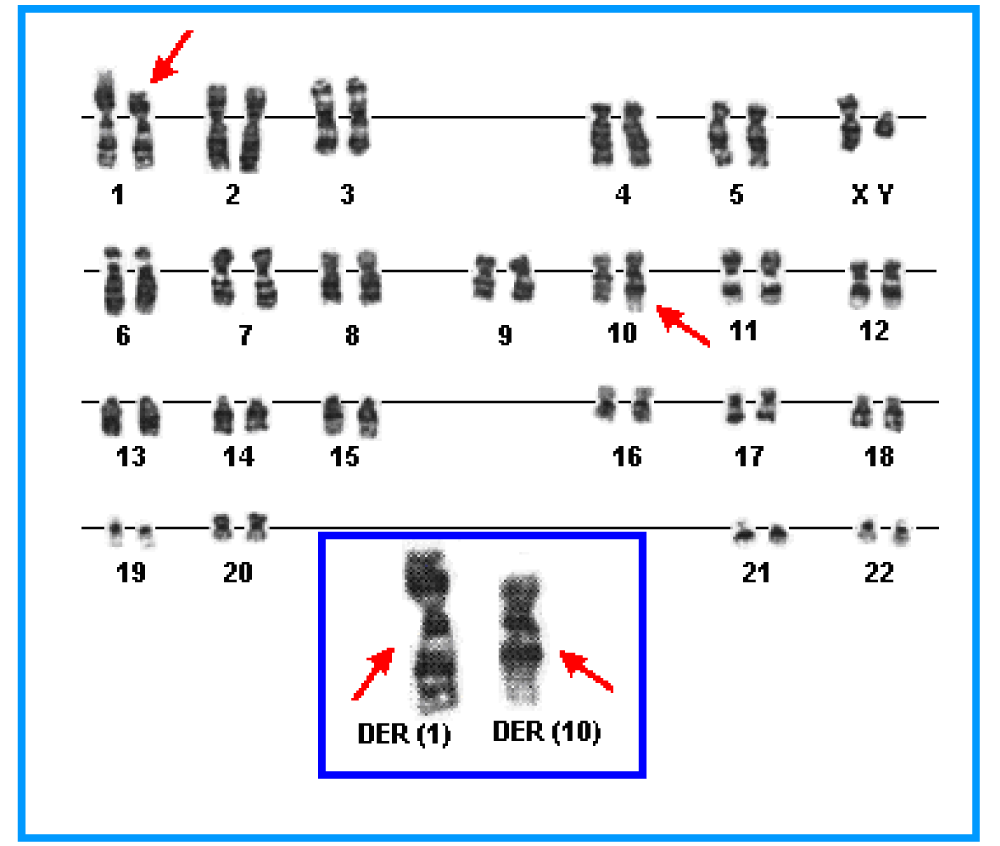
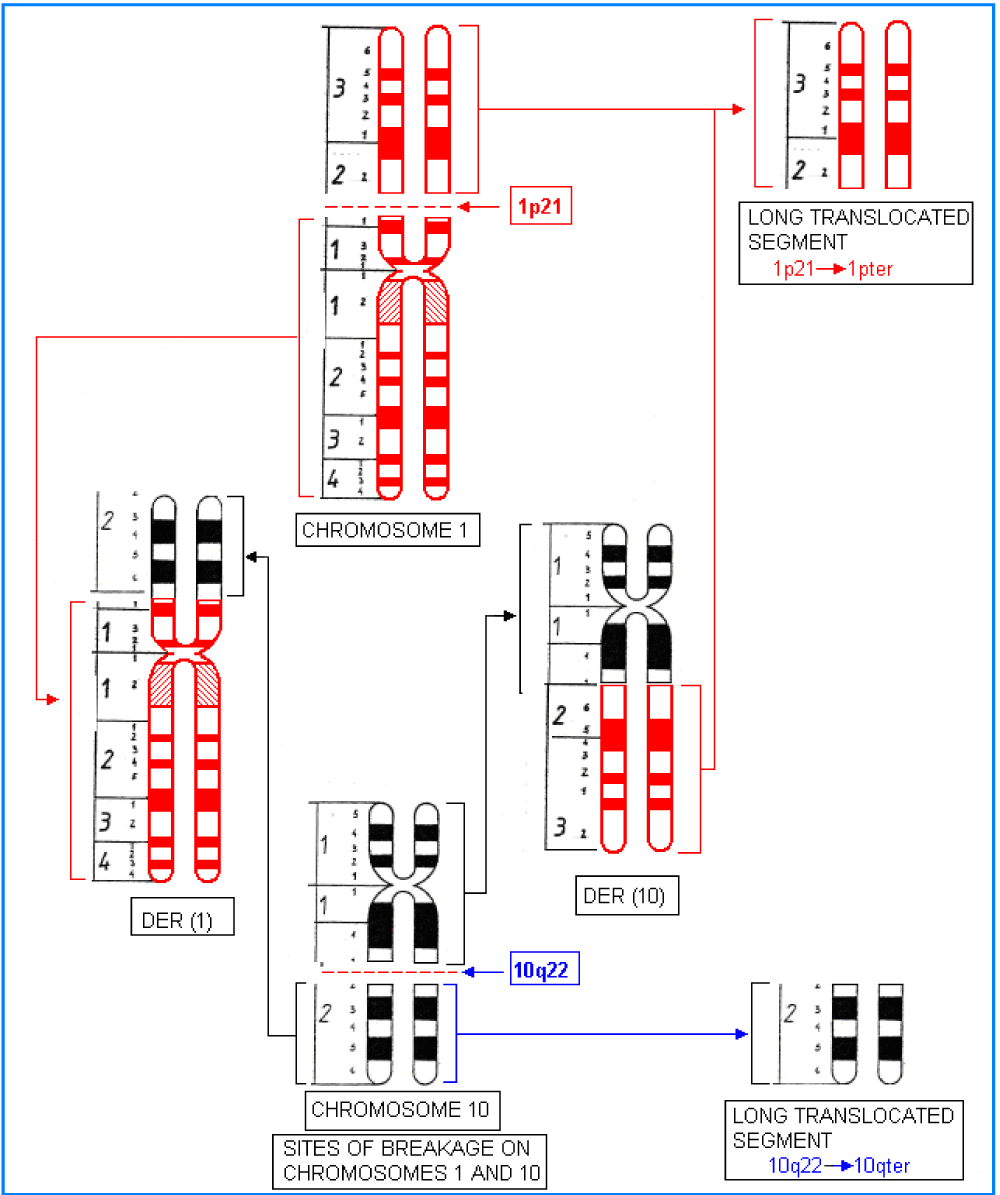
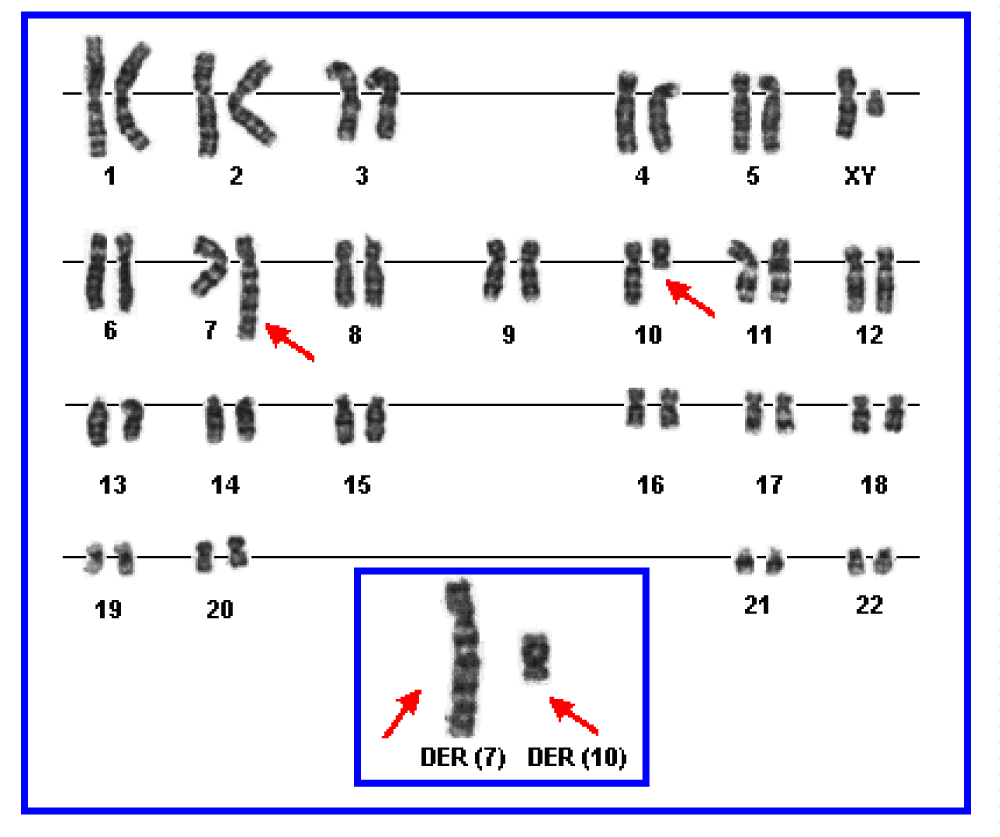
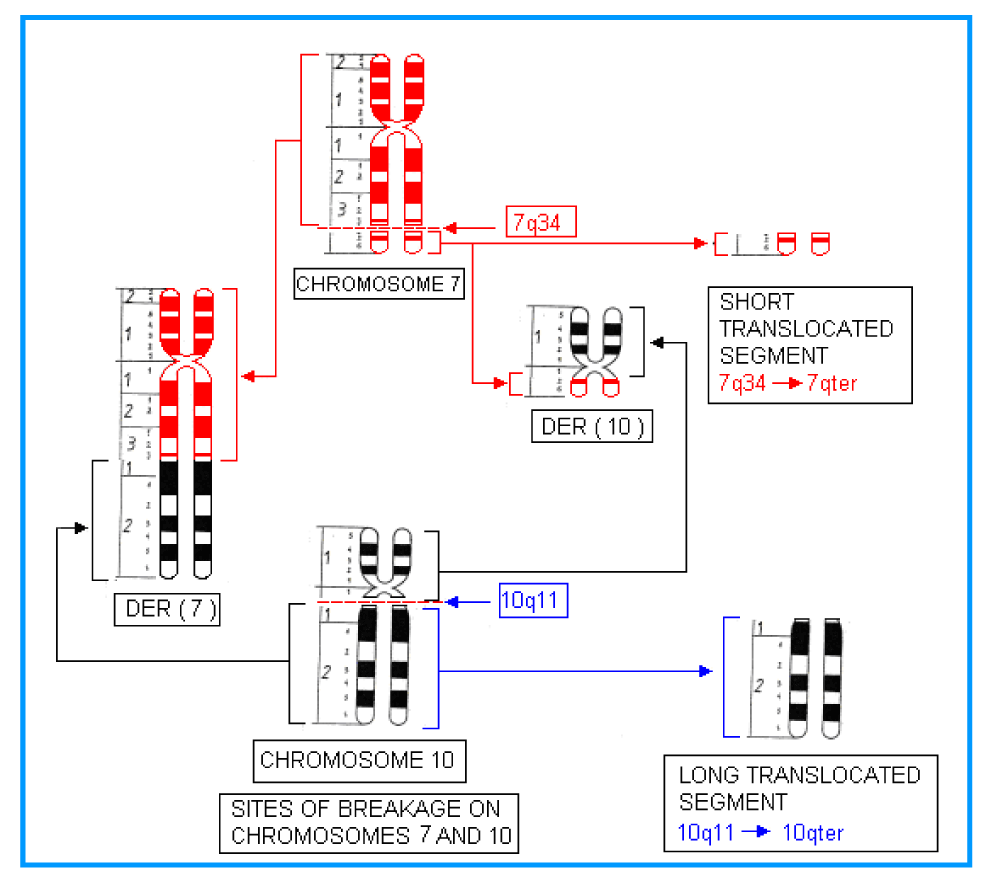
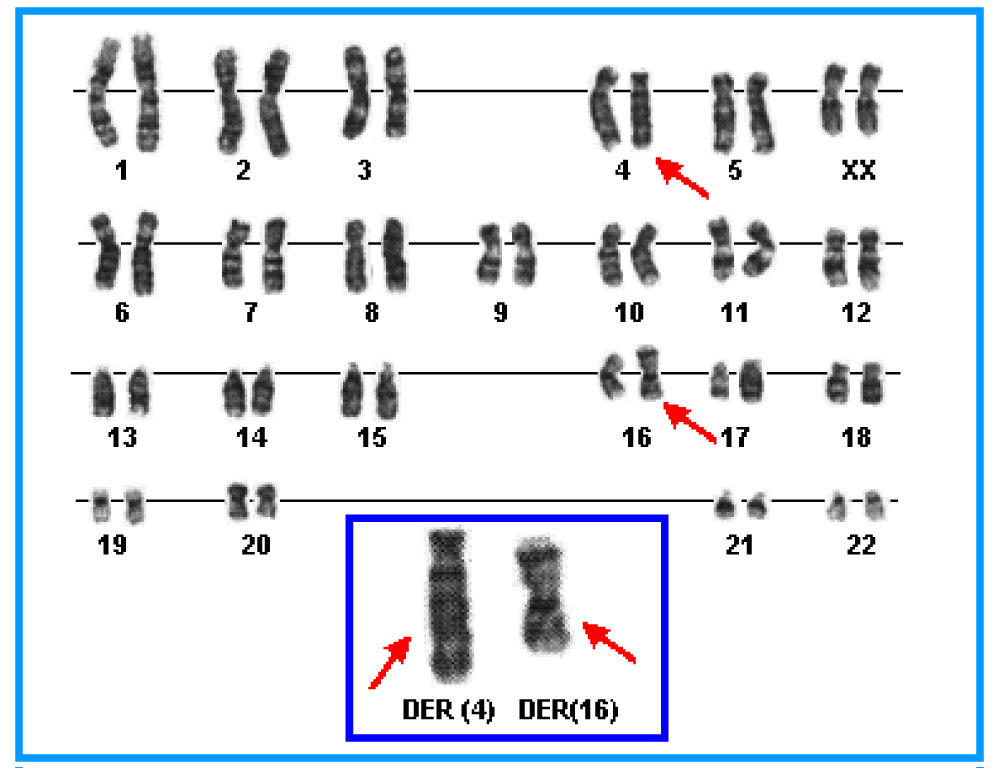
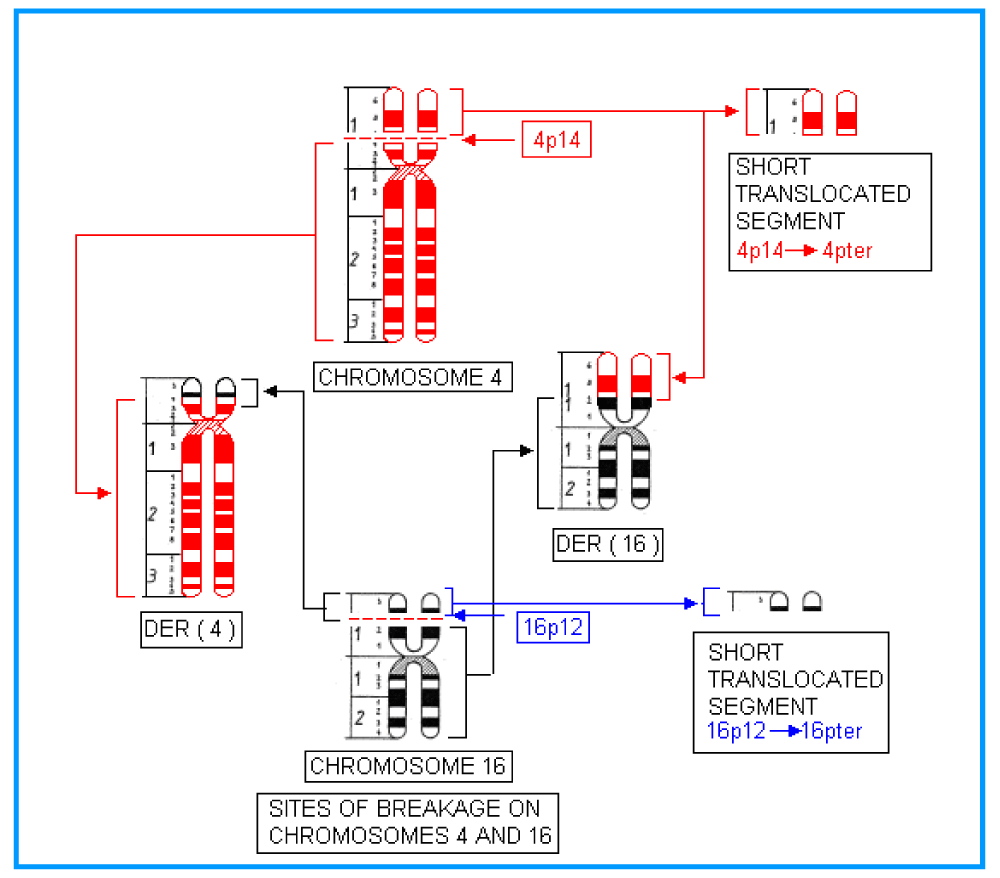

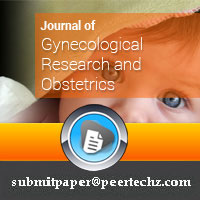
 Save to Mendeley
Save to Mendeley
